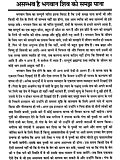

The epic poem is, therefore, also referred to as Tulsikrit Ramayana (literally, The Ramayana composed by Tulsidas). Then he narrated the story and named it Ramcharitmanas as Shiva himself called it. His guru graciously repeated it again and again so that he could understand and remember it. Some understand this passage of the Ramcharitmanas to mean that Tulsidas at first could not grasp the story fully as he was a naïve young boy. Tulsidas claims to have received the story through his guru, Narharidas.Tulsidas was a naive (Acheta) child and the story was stored in his mind (Mānasa) for long before he wrote it down as Ramcharitmanas. He calls the epic Ramcharitmanas as the story of Rama, that was stored in the mind (Mānasa) of Shiva before he narrated the same to his wife Parvati. Tulsidas himself never writes Ramcharitmanas as being a retelling of Valmiki Ramayana. Tulsidas is said to have some spiritual powers to see the events occurred till Tretayuga that he used to narrate Ramcharitmanas. Ramcaritmanas has elements from many other Ramayanas written earlier in Sanskrit, and other Indian dialects as well as stories from Puranas.

However, the Ramacharitmanas is by no means a word-to-word copy of the Valmiki Ramayana nor an abridged re-telling of the latter. Rama was the crown prince of Ayodhya and is considered in Hindu tradition as the seventh Avatar of Vishnu. The Valmiki Ramayana is centered on the narrative of Rama, the scion of the family tree of king Raghu of the Sun Dynasty. The Ramcharitmanas is written in vernacular Awadhi language, The core of the work is considered by some to be a poetic retelling of the events of the Sanskrit epic Ramayana by Valmiki. This also makes Tulsidas a contemporary of William Shakespeare. Akbar (1556-1605 CE) was the Emperor of India during this period. Ramcharitmanas was composed at Ayodhya, Varanasi and Chitrakoot. The exact date is stated within the poem as being the ninth day of the month of Chaitra, which is the birthday of Rama, Rama Navami. Tulsidas began writing the Ramcharitmanas in Ayodhya in Vikram Samvat 1631 (1574 CE). Picture of author, Tulsidas published in the Ramcharitmanas, 1949. Ramcharitmanas is considered by many as a work belonging to the Saguna school of the Bhakti movement in Hindi literature. The writing of Ramcharitmanas also heralded many a cultural tradition, most significantly that of the tradition of Ramlila, the dramatic enactment of the text. Ramcharitmanas, made available the story of Rama to the common man to sing, meditate and perform on. Subsequently, his work was widely accepted. However, Tulsidas remained steadfast in his resolve to simplify the knowledge contained in the Vedas, the Upanishads and the Puranas to the common people.

Tradition has it that Tulsidas had to face much criticism from the Sanskrit scholars of Varanasi for being a bhasha (vernacular) poet. In order to make the story of Rama as accessible to the layman as to the scholar, Tulsidas chose to write in Awadhi. However, he wanted the story of Rama to be accessible to the general public, as many Apabhramsa languages had evolved from Sanskrit and at that time few people could understand Sanskrit. Tulsidas was a great scholar of Sanskrit.


 0 kommentar(er)
0 kommentar(er)
